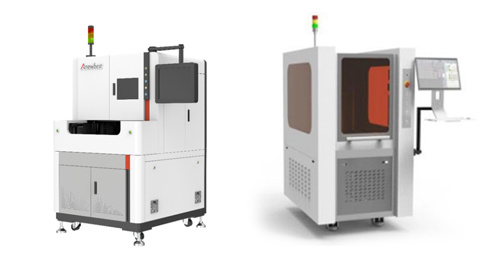18
2024
-
06
The Science behind Dross Recovery: Understanding the Process
Author:
**Introduction** Dross recovery is a crucial aspect of the recycling industry, playing a significant role in transforming scrap materials into valuable resources. This process involves reclaiming aluminum waste generated during the melting and casting of aluminum alloys. By understanding the science behind dross recovery, we can appreciate its importance in reducing waste and conserving resources.
**Introduction**
Dross recovery is a crucial aspect of the recycling industry, playing a significant role in transforming scrap materials into valuable resources. This process involves reclaiming aluminum waste generated during the melting and casting of aluminum alloys. By understanding the science behind dross recovery, we can appreciate its importance in reducing waste and conserving resources.
**What is Dross?**
**Dross** is a byproduct of the aluminum casting process, consisting of impurities such as oxides, non-metallic inclusions, and metallic particles. During melting and casting, these impurities rise to the surface of the molten metal, forming a layer of dross that needs to be removed to ensure the quality of the final product.
**The Dross Recovery Process**
**1. Collection:** The first step in dross recovery involves collecting the dross from the surface of the molten metal using specialized tools and equipment.
**2. Cooling:** Once collected, the dross is allowed to cool and solidify, making it easier to separate from the aluminum.
**3. Crushing:** The solidified dross is then crushed into small pieces to facilitate further processing.
**4. Separation:** Through a series of mechanical and thermal processes, the aluminum is separated from the dross, allowing for the recovery of valuable metal.
**5. Recycling:** The recovered aluminum can be recycled and used in various industries, reducing the need for primary aluminum production and minimizing environmental impact.
**Benefits of Dross Recovery**
**1. Resource Conservation:** Dross recovery helps in conserving valuable resources by recycling aluminum waste and reducing the reliance on virgin materials.
**2. Cost Savings:** By recovering aluminum from dross, companies can save on production costs and improve their bottom line.
**3. Environmental Sustainability:** Dross recovery plays a crucial role in promoting environmental sustainability by reducing waste generation and lowering greenhouse gas emissions associated with primary aluminum production.
**FAQs**
**Q1. How is dross generated in the aluminum casting process?**
A1. Dross is formed when impurities present in the aluminum alloy rise to the surface during melting and casting, creating a layer of waste material.
**Q2. What are the common methods used for dross recovery?**
A2. Common methods include mechanical separation, thermal treatment, and chemical processes to reclaim aluminum from dross.
**Q3. What are the environmental benefits of dross recovery?**
A3. Dross recovery helps in reducing waste generation, conserving resources, and lowering the environmental impact of aluminum production.
**Q4. How does dross recovery contribute to cost savings for companies?**
A4. By recycling aluminum from dross, companies can reduce the need for primary aluminum production, saving on energy and raw material costs.
**Q5. What industries benefit from dross recovery?**
A5. Industries such as automotive, aerospace, and construction benefit from dross recovery by utilizing recycled aluminum in their manufacturing processes.
**Conclusion**
In conclusion, understanding the science behind dross recovery is essential for appreciating its significance in the recycling industry. By reclaiming aluminum waste through efficient processes, we can reduce waste, conserve resources, and promote environmental sustainability. Dross recovery not only benefits companies by saving costs but also contributes to a greener, more sustainable future for all.
Dross recovery is a crucial aspect of the recycling industry, playing a significant role in transforming scrap materials into valuable resources. This process involves reclaiming aluminum waste generated during the melting and casting of aluminum alloys. By understanding the science behind dross recovery, we can appreciate its importance in reducing waste and conserving resources.
**What is Dross?**
**Dross** is a byproduct of the aluminum casting process, consisting of impurities such as oxides, non-metallic inclusions, and metallic particles. During melting and casting, these impurities rise to the surface of the molten metal, forming a layer of dross that needs to be removed to ensure the quality of the final product.
**The Dross Recovery Process**
**1. Collection:** The first step in dross recovery involves collecting the dross from the surface of the molten metal using specialized tools and equipment.
**2. Cooling:** Once collected, the dross is allowed to cool and solidify, making it easier to separate from the aluminum.
**3. Crushing:** The solidified dross is then crushed into small pieces to facilitate further processing.
**4. Separation:** Through a series of mechanical and thermal processes, the aluminum is separated from the dross, allowing for the recovery of valuable metal.
**5. Recycling:** The recovered aluminum can be recycled and used in various industries, reducing the need for primary aluminum production and minimizing environmental impact.
**Benefits of Dross Recovery**
**1. Resource Conservation:** Dross recovery helps in conserving valuable resources by recycling aluminum waste and reducing the reliance on virgin materials.
**2. Cost Savings:** By recovering aluminum from dross, companies can save on production costs and improve their bottom line.
**3. Environmental Sustainability:** Dross recovery plays a crucial role in promoting environmental sustainability by reducing waste generation and lowering greenhouse gas emissions associated with primary aluminum production.
**FAQs**
**Q1. How is dross generated in the aluminum casting process?**
A1. Dross is formed when impurities present in the aluminum alloy rise to the surface during melting and casting, creating a layer of waste material.
**Q2. What are the common methods used for dross recovery?**
A2. Common methods include mechanical separation, thermal treatment, and chemical processes to reclaim aluminum from dross.
**Q3. What are the environmental benefits of dross recovery?**
A3. Dross recovery helps in reducing waste generation, conserving resources, and lowering the environmental impact of aluminum production.
**Q4. How does dross recovery contribute to cost savings for companies?**
A4. By recycling aluminum from dross, companies can reduce the need for primary aluminum production, saving on energy and raw material costs.
**Q5. What industries benefit from dross recovery?**
A5. Industries such as automotive, aerospace, and construction benefit from dross recovery by utilizing recycled aluminum in their manufacturing processes.
**Conclusion**
In conclusion, understanding the science behind dross recovery is essential for appreciating its significance in the recycling industry. By reclaiming aluminum waste through efficient processes, we can reduce waste, conserve resources, and promote environmental sustainability. Dross recovery not only benefits companies by saving costs but also contributes to a greener, more sustainable future for all.
dross recovery machine
Previous page
undefined









